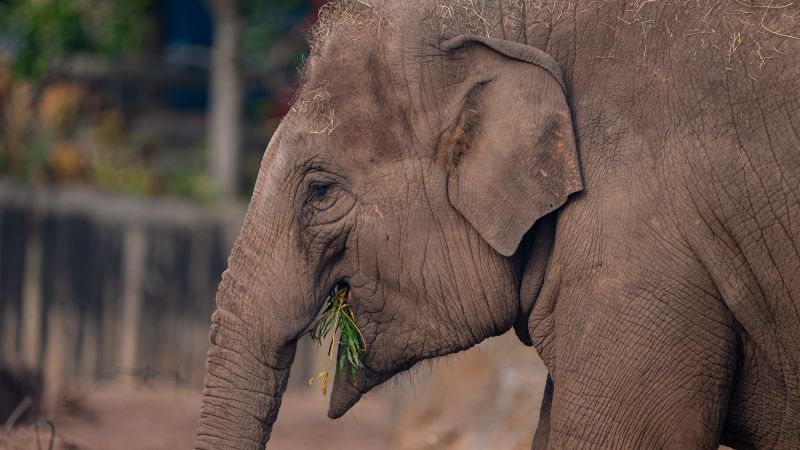Professor Suzannah Williams, a dedicated academic at Oxford University, finds herself engaged in an exceptionally unconventional yet vital research endeavor: analyzing animal feces. While the nature of her work might seem distasteful to many, she is driven by a strong desire to contribute to biodiversity conservation efforts. Alarmingly, wildlife populations have plummeted by an average of 73% between 1970 and 2020, posing a significant threat to ecological stability. Williams and her team are convinced that examining animal excrement can yield crucial insights that may aid conservationists in monitoring wildlife populations and potentially facilitate the recovery of endangered species.
The science behind analyzing feces is fascinating. As animals expel waste, they disseminate living cells originating from their intestines, which can often be found on the dung’s surface. These living cells contain vital genetic material, including DNA, which enables researchers to explore the diversity of species in various ecosystems. This genetic information could be instrumental in shaping breeding programs and informing conservation strategies, particularly for species that are facing the threat of extinction.
Traditionally, obtaining tissue samples from wild animals would require capturing and anesthetizing them, a process that is not only time-consuming but also inherently stressful for the animals involved. Additionally, regulatory frameworks in the UK and Europe impose strict limitations on tissue sampling. Such constraints make it incredibly challenging to gather comprehensive data on genetic diversity. To overcome these hurdles, Williams established the innovative “Poo Zoo” in October 2024. This initiative was funded by the conservation non-profit organization Revive and Restore and drew inspiration from prior Japanese research into isolating cells from mouse feces, albeit with some initial complications due to contamination.
The objectives of the Poo Zoo project are ambitious. By refining the techniques used for isolating living cells from feces, Williams hopes to enhance the quality of these cells and provide conservationists with a non-invasive method for sampling. This methodology could eventually support biobanking—the creation of repositories for genetic material—facilitating assisted reproduction efforts for elusive and endangered species. Williams emphasizes that this approach doesn’t necessarily yield superior samples compared to traditional tissue methods, but it offers a viable alternative for gathering genetic information without directly interacting with the animals.
Initially focusing on mouse feces, the research team experimented with various methods to optimize the process of extracting living cells from the scat quickly and efficiently. After achieving success with mice, the Poo Zoo transitioned its focus to a larger species: elephants. However, this shift posed significant logistical challenges due to the sheer size of elephant dung. Williams recounts the difficulties associated with handling vast amounts of fecal matter in comparison to the much smaller and more manageable mouse pellets.
In collaboration with Chester Zoo, biobanking researcher Dr. Rhiannon Bolton took on the considerable challenge of refining techniques suitable for extracting living cells from elephant feces. This involved rigorous trial and error to improve sample purity and usability. While various non-invasive sampling methods exist—such as hair traps that incorporate pheromones and glue—the feces sampling method offers a more reliable and plentiful resource for obtaining the necessary cells. Bolton notes that their developed protocols are straightforward and cost-effective, with the potential for widespread implementation.
The team has successfully isolated living elephant cells on multiple occasions, affirming the viability of their technique. Williams holds great hope that once the research findings are published, this method could be utilized in the wild, allowing conservationists to collect genetic material from animals tracked via their waste. Freshness remains a potential limiting factor, as environmental conditions could impact the quality of the samples collected in the field.
Beyond genetic analysis, Williams and Bolton foresee additional applications for the research conducted at the Poo Zoo, including the extraction of cells for artificial insemination purposes. Challenges persist in ensuring the cleanliness of samples collected from such uncontaminated environments, as contamination presents significant hurdles to effective biobanking. Experts in the field, like Dr. Thomas Hildebrandt of the Leibniz Institute for Zoo and Wildlife Research in Germany, recognize the potential benefits of this work while also expressing skepticism regarding the practicalities of producing clean and viable samples suitable for advanced reproductive technologies.
There are often more straightforward alternatives for obtaining genetic material, such as drawing blood from captive animals, which, while challenging, is simpler compared to feces collection. Moreover, concerns regarding zoonotic diseases further complicate the collection of samples from wild animals. Despite these obstacles, Williams and Bolton remain optimistic about the possibilities their research could unlock, particularly for the preservation and restoration of biodiversity.
Addressing the alarming pace of biodiversity loss—often described as the “sixth mass extinction”—the researchers highlight the importance of genetic diversity for the resilience of animal populations against threats such as diseases and climate change. Williams believes that the Poo Zoo could represent a low-cost means of gathering essential genetic data both in captivity and the wild. Ultimately, her conviction resounds in her desire for a world where her research is no longer necessary—where animals exist in thriving ecosystems, free from the












